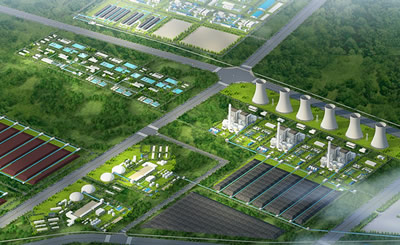
About coop eco zone Cooperative Economic Zone (Co-op Eco Zone): A New SEZ Model for Inclusive Growth
About coop eco zone
Cooperative Economic Zone (Co-op Eco Zone): A New SEZ Model for Inclusive Growth
A Cooperative Economic Zone (Co-op Eco Zone) is a progressive adaptation of the Special Economic Zone (SEZ) model, designed to foster inclusive and sustainable economic development. Unlike traditional SEZs, which primarily emphasize profit-driven investment and export-oriented activities, Co-op Eco Zones prioritize community ownership, equitable wealth distribution, and environmental sustainability.
Key Features of a Co-op Eco Zone:
1. Community Ownership:
Businesses and industries in the zone operate as cooperatives or follow cooperative principles.
Local communities hold significant ownership stakes, ensuring they benefit directly from economic activities.
2. Inclusive Economic Development:
The model supports marginalized groups, small businesses, and local entrepreneurs by providing access to resources, training, and markets.
Employment opportunities emphasize fair wages, social security, and worker representation.
3. Sustainability-Focused:
Environmental standards are integrated into all activities, promoting renewable energy use, waste reduction, and sustainable resource management.
Circular economic practices are encouraged to minimize ecological footprints.
4. Innovative Incentives:
Tax breaks and subsidies are tied to social impact metrics, such as job creation, skill development, and environmental performance.
Cooperative enterprises receive preferential access to financing and infrastructure.
5. Collaborative Governance:
Decision-making involves multiple stakeholders, including local communities, government bodies, and cooperative representatives.
Transparent and democratic governance ensures accountability and shared benefits.
Benefits of a Co-op Eco Zone:
Economic Resilience: Diversified ownership reduces risks of economic instability.
Social Equity: Wealth and resources are distributed more fairly, reducing poverty and inequality.
Environmental Stewardship: Green practices help protect ecosystems and combat climate change.
Implementation Example:
Imagine a Co-op Eco Zone focused on agriculture. Farmers form cooperatives to collectively own and manage food processing plants, gaining access to advanced technologies, better market prices, and export opportunities. The zone integrates eco-friendly practices like organic farming and water conservation, creating a sustainable agricultural hub.
By combining the growth potential of SEZs with cooperative values, Co-op Eco Zones redefine how we think about economic development, ensuring that prosperity is shared, sustainable, and inclusive.
About coop eco zone
Cooperative Economic Zone (Co-op Eco Zone): A New SEZ Model for Inclusive GrowthA Cooperative Economic Zone (Co-op Eco Zone) is a progressive adaptation of the Special Economic Zone (SEZ) model, designed to foster inclusive and sustainable economic development. Unlike traditional SEZs, which primarily emphasize profit-driven investment and export-oriented activities, Co-op Eco Zones prioritize community ownership, equitable wealth distribution, and environmental sustainability.
Key Features of a Co-op Eco Zone:
1. Community Ownership:
Businesses and industries in the zone operate as cooperatives or follow cooperative principles.
Local communities hold significant ownership stakes, ensuring they benefit directly from economic activities.2. Inclusive Economic Development:
The model supports marginalized groups, small businesses, and local entrepreneurs by providing access to resources, training, and markets.
Employment opportunities emphasize fair wages, social security, and worker representation.3. Sustainability-Focused:
Environmental standards are integrated into all activities, promoting renewable energy use, waste reduction, and sustainable resource management.
Circular economic practices are encouraged to minimize ecological footprints.4. Innovative Incentives:
Tax breaks and subsidies are tied to social impact metrics, such as job creation, skill development, and environmental performance.
Cooperative enterprises receive preferential access to financing and infrastructure.5. Collaborative Governance:
Decision-making involves multiple stakeholders, including local communities, government bodies, and cooperative representatives.
Transparent and democratic governance ensures accountability and shared benefits.Benefits of a Co-op Eco Zone:
Economic Resilience: Diversified ownership reduces risks of economic instability.
Social Equity: Wealth and resources are distributed more fairly, reducing poverty and inequality.
Environmental Stewardship: Green practices help protect ecosystems and combat climate change.Implementation Example:
Imagine a Co-op Eco Zone focused on agriculture. Farmers form cooperatives to collectively own and manage food processing plants, gaining access to advanced technologies, better market prices, and export opportunities. The zone integrates eco-friendly practices like organic farming and water conservation, creating a sustainable agricultural hub.
By combining the growth potential of SEZs with cooperative values, Co-op Eco Zones redefine how we think about economic development, ensuring that prosperity is shared, sustainable, and inclusive.






